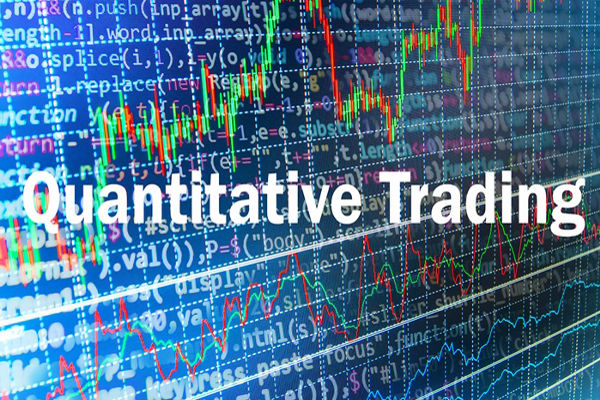Quantitative investment originated from the 1980s to 1990s, but has now become an important field in the asset management industry. While many areas of the financial industry are being disrupted by technology and new distribution channels, quantitative investment continues to thrive.
The characteristic of quantitative investment is based on historical data, emphasizing objective data analysis, and not being affected by the negative impact of traders' subjective emotional changes on decision-making. Moreover, it is more convenient and consumes less time and energy than traditional fundamental analysis (such as industry, business model, financial analysis, etc.). Even a small quantitative analysis team can manage a Securities investment portfolio covering a large range.
At present, quantitative investment is still in rapid development, with huge potential and great room for further exploration and implementation. This article, EBC, will take you closer to quantitative investment and is willing to provide inspiration to every person who hopes to become a rational investor.

What is Quantitative Investment
Quantitative investment is the use of statistical and mathematical models to study the behavior of underlying assets. Quantitative investment is divided into two different parts: research and practice.
Research is commonly used to construct a model to determine the probability of stocks having benchmark indices above average performance. In practice, in order to better use this model, stocks are usually rated based on one or more features (or factors) and then ranked. Quantitative investment portfolios typically hold top ranked stocks and undergo regular post evaluation. When stock price changes result in discrepancies with the initial model, they are rebalanced. Quantitative technology can be used to manage investment portfolios containing multiple stocks, as well as long/short investment portfolios.
Quantification and Fundamentals Investment
Traditional fundamental investments are usually based on bottom-up analysis and predictions of company returns and economic growth. Fundamental analysis also focuses on qualitative factors, such as management quality and the health of the balance sheet. When using quantitative factors in capital investment decisions, portfolio managers tend to look for reliable factors that can bring excess returns. Rather than investing based on subjective predictions, it is more about investing based on empirical data.
Quantitative investment models are based on the distribution of probability and expected returns, which means they can more accurately predict expected risks and returns, but this also requires a sufficiently large sample size to be effective. Therefore, quantitative funds typically hold more securities than actively managed funds.

Types of Quantitative Investment Strategies
Most quantitative investment models overlap with each other and some have their own unique characteristics, but most strategies contain the following strategic elements:
Factor investment models are used to select stocks with one or more historically outstanding characteristics. General factors include value, momentum, market value, and growth. More specific factors include the ratio of price to book value, price to Free cash flow and return on equity. Quantitative investment factor models typically score each stock based on a series of indicators, and then calculate the total score used to rank the stocks.
Smart beta is a method of measuring the sensitivity of securities to market fluctuations. It measures the performance of an asset relative to the entire market. For example, a stock that is 20% more volatile than the market β The value is 1.2. By focusing on beta, investors can construct passively managed investment portfolios that meet their risk preferences. The smart beta strategy aims to surpass market performance by reweighting securities portfolios based on factors such as volatility, momentum, size, or value, and customizing indices (such as market value weighted indices).
Event driven arbitrage typically utilizes historical and real-time data to identify improperly priced securities that may respond to specific corporate or market events. Events include earnings announcements, economic data announcements, company actions, and regulatory changes. If the price behavior follows a typical pattern, the investment portfolio can lock in profits by buying or selling short securities.
Global macro strategy is based on quantitative analysis of the economies of each country and region. This analysis is used to allocate capital to countries, regions, asset classes, and industries with good fundamentals.
The risk balancing strategy is to balance the risk of an investment portfolio based on the performance of each asset in different types of environments. The core theory of this method is that the volatility and losses of one asset will always be offset by other assets.
Statistical Arbitrage is a relatively active quantitative trading strategy. It is a method based on mean regression, which searches for incorrect pricing (overestimation or undervaluation) based on the relationship between securities. When prices return to normal, establish long and short positions in relevant stocks to profit. They establish long positions in undervalued securities and match short positions in overvalued securities, ultimately expecting prices to return to the average. Statistical arbitrage heavily utilizes high-frequency trading techniques, quantitative analysis, and computer modeling, as well as financial ratios to identify assets with incorrect pricing.
Managed futures, also known asCTA, Trend Tracking Hedge Fund, uses systematic methods to track major market trends. Traditionally, these funds focused on the futures market, but they are now increasingly active in the stock market.
Quantitative value uses an orderly method to examine each company's income statement and balance sheet for each item, and then calculates a summarized value score and uses it to rank stocks. This systematic value investment method is very effective, but it requires a long-term time frame.
Strategies based on artificial intelligence and big data are the latest type of quantitative strategy. It attempts to use the latest technology and data to find new sources of alpha.

The advantages of quantitative investment
Because quantitative trading decisions are made by computer models, they are not influenced by human emotions. This applies to entering and exiting positions, as emotions are often the biggest issue for investors. In addition, quantitative investment can actually take advantage of irrational loopholes in the market to make trading decisions and achieve excess returns.
A small quantitative analysis team can cover a large number of securities. They can cover multiple industries, regions, and countries, so quantitative analysis has more opportunities to find securities that may outperform the market. This also means that it is cheaper than analysis based on 'per stock'.
Quantitative investment is based on data, which means that the results are more predictable, especially in terms of expected risks and returns. Therefore, they can better meet the needs of different investors. Once created, quantitative models can be easily and inexpensively tested in different markets, regardless of whether modifications have been made.
Disadvantages of Quantitative Investment
Due to the distribution and probability of expected returns, quantitative investment requires a considerable amount of shareholding. This may lead to dilution of the return rate. Quantitative strategies typically take a long time to execute and typically fall below their baseline in a short time frame.
Quantitative strategies are susceptible to sudden increases in volatility and flashbacks. The management of quantitative investment does not have any discretion, which may be a double-edged sword. In most cases, calmness in decision-making is an advantage, but in some cases it may also be a disadvantage.
Today's Quantitative Investment
Today, Wall Street has accepted quantitative investment, and quantitative technology is used to manage most types of investment funds, including mutual funds, hedge funds, ETFs, and independent investment portfolios. Quantitative technology is also used for asset allocation and risk management, and to adjust investment portfolios according to customer needs.
The new frontier of quantitative investment is to create strategies that fully adopt technology. Artificial intelligence is being used to find more subtle patterns and relationships between asset prices and data from other data sources. Big data is used to obtain and mine new data sources, which may generate new alpha. User generated data is being used to measure investor sentiment and mapped to asset prices.
The Future of Quantitative Investment
Quantitative investment is making progress in different fields, and the future is likely to see the integration of these different technologies and platforms. The development of other fields, including the introduction of new investment products and asset classes (such as cryptocurrencies and tokenized securities), will create new opportunities.
The continuous globalization of the market will also play a role in the future, as investors will be able to enter new markets. The biggest opportunities may lie in artificial intelligence and big data. Satellite images, social media content, and GPS from vehicles and devicesData is a potential source of data.
Emotion is an increasingly important factor for quantitative investment. Artificial intelligence and big data are also widely used to simulate emotions and predict them. The advancement of artificial intelligence may ultimately allow many qualitative factors to be incorporated into modeling.
Epilogue
Quantitative investment is mainly based on quantitative analysis, which introduces a more scientific and systematic method for investment. This method of making investment decisions based on empirical data has many advantages, such as lower relative costs and eliminating emotions in the decision.
Strategies based on quantitative models are not panacea and cannot guarantee performance, but in most cases, quantitative strategies have a better chance of achieving their goals. Quantitative investment still has a long way to go, but we believe that this technology will usher in faster and more comprehensive growth and development in the future, empowering traders on their investment path.






















